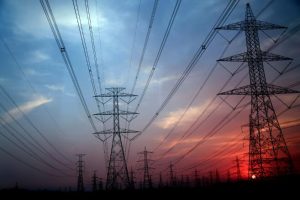 Renewables plus batteries could offer Australia’s National Energy Market (NEM) the same energy security and reliability as coal and gas generators, according to new report commissioned by The Australia Institute, a think tank in Canberra.
Renewables plus batteries could offer Australia’s National Energy Market (NEM) the same energy security and reliability as coal and gas generators, according to new report commissioned by The Australia Institute, a think tank in Canberra.
Historically, coal plants and other “synchronous” generators such as gas and hydro facilities have kept frequency and voltage in the electricity grid within safe limits. However, ministers are soon set to agree on the Energy Security Board’s Post-2025 proposal to redesign the National Electricity Market, and this has prompted The Australia Institute to propose new rule changes, so such functions are not automatically relegated to fossil fuel-based sectors.
The technical study underpinning the report was conducted by the Victorian Energy Policy Centre. It aimed to provide input into the Energy Security Board’s Post-2025 review.
“The technical study finds that batteries and renewable energy are becoming competitive with conventional sources of inertia and system strength. There is no technical obstacle to them replacing the system security which has been provided by coal and gas generators,” said Dan Cass, energy policy and regulatory lead at The Australia Institute. “The rules governing the provision of inertia and system strength are not fit for purpose for the Post-2025 market. They are a brake on the clean energy transition and undermine state-based Renewable Energy Zones.”
New inverter-based sources are already proving to be cheaper and better than legacy technologies, Cass said. He pointed to one project in Queensland that has tuned its inverters at four large solar projects for around 4% of the cost of a conventional synchronous condenser solution.
“Batteries can deliver far more system security than a coal generator of the same power capacity. When EnergyAustralia announced that the 1.48 GW Yallourn coal power station would close in 2028, it also announced a new 350 MW battery will be built in 2026. The battery is likely to be able to provide at least three times as much inertia as Yallourn, despite a capacity a quarter as large,” Cass said.
Clean energy resources have traditionally been excluded from providing system security, the report says, but it notes that this began to shift in 2017. However, Cass said that “regulatory barriers continue to be the key limitation on batteries and renewable energy providing system security.”
The Australia Institute has also found that there is popular support for using clean energy technologies to support the grid, rather than coal and gas. In March 2021, it conducted a national opinion poll of 1,040 people and found that 51% of Australians would prefer to pay for new batteries to keep the grid secure, where 26% would prefer to continue to pay for coal generators.
The Australia Institute is proposing three key objectives for the Post-2025 redesign: more competition, the promotion of innovation, and pragmatism in accommodating state policies. The full report is available on The Australia Institute’s website.





